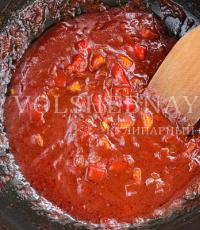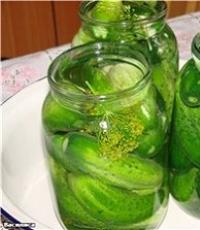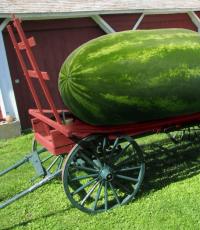An exemplary diet for martial artists. Rules for rational nutrition of a fighter Sports nutrition for freestyle wrestlers
Freestyle wrestling is an amazing sport. It includes the single combat of two athletes, wrestlers on the carpet, according to special rules. Wrestling is a very spectacular sport, since the essence of wrestling is throws, grabs, tricks, sweeps. The essence of this sport is for one of the rivals to put the other on the shoulder blades or score more points after two periods of struggle.
In order to become a real fighter and achieve results, you need to spend several hours every day in the gym, training tirelessly. It is exhausting, long training that makes the boy a fighter.
But in order to withstand daily three-hour workouts, you must always be in good shape and have a supply of strength and energy. To do this, you need to eat right, at times of peak load, sports nutrition can help the body. It is impossible to become a fighter, and an athlete in general, without proper, regulatory nutrition. After all, it is proper nutrition coupled with the training process make your body strong, strong, hardy.
Any athlete of power martial arts, and especially a wrestler, needs a strong, powerful physique. A wrestler needs more calories than a normal person of the same weight in order to provide the body with protein and energy. Often, the foods that we eat at home during all meals do not have enough calories for an athlete. Therefore, you can resort to additional nutrition. That is sports nutrition. This nutrition for athletes, in the form of a powder or liquid, combines concentrated proteins, carbohydrates and amino acids. Sports nutrition will help build muscle, and restore them after a workout faster. For more details, trust the professionals in this matter.
The most popular types of sports nutrition:
Protein is a high pure protein supplement with no carbs or fat. Helps in building mass.
Amino acids - are the "building blocks" of which proteins are built, they are taken mainly after training, for a quick recovery of the body. Amino acids can be purchased in various forms.
Gainers are a mixture of protein and carbohydrates. They differ in the percentage composition of carbohydrates and proteins. Proteins are the same as in proteins. Helps build muscle and store energy.
However, before taking any nutritional supplements, do not forget to consult a trainer and a doctor. However, as elsewhere, in sports you need to turn on the brain and be guided by the main rule of the doctor - "do no harm." Be healthy.
Hygiene, nutrition and daily routine of an athlete
Mode, hygiene, hardening and nutrition have great importance for a fighter. The main requirements for the regime are a rational alternation of work and rest. You should get up no later than 7 o'clock. It is especially necessary to take into account the fact that during the day a person's performance changes. Rising smoothly, it reaches a high level at 10–13 o'clock, and also from 16 to 20 o'clock. Therefore, after lifting, the load should not be large, it is enough just to do morning exercises, moreover, without weights. It is advisable to go to bed before 23:00. Sine qua non good night is peace and quiet.
Great demands are placed on the nutrition of a wrestler. The wrestler's diet must fully cover the energy costs of the body. During intensive training, a wrestler should receive 65–70 kcal per day with food. per 1 kg of weight. Special attention should be given to the presence of protein in food. Daily rate proteins should be 2.4–2.5 per 1 kg of weight, and proteins should be distributed approximately equally between both animal and vegetable origin. Fats and carbohydrates should also be present in a certain proportion: fats 2.0–2.1 per 1 kg of weight, carbohydrates 9.0–10.0 per 1 kg of weight. The most valuable foods for a wrestler: lean meat, fish, cottage cheese, cheese, eggs, butter, oatmeal and buckwheat porridge. Much attention should be paid to the presence of vitamins, especially due to the presence in the diet of a large number of fruits and vegetables.
Compliance with the rules of personal hygiene is important for improving the health and improving the performance of a wrestler. The main means of skin care is regular washing of the body. After training, you need to take a warm shower. It cleanses the skin well and has a calming effect on the nervous and cardiovascular systems. Particular attention should be paid to the hands. It is undesirable to work out blows on projectiles without bandaged hands and projectile gloves. The sauna plays an important role in the wrestler's personal hygiene. The bath also has a restorative and hardening effect. Indications and contraindications for sports. Self control. Its meaning and content. Objective self-control data: weight, dynamometry, spirometry, pulse, respiratory rate and rhythm, sweating. Subjective data of self-control: well-being, sleep, appetite, mood, performance, pain, violation of the regime. Fatigue, overwork, overtraining, their signs and prevention measures. The value of systematic studies physical education and sports to improve health, physical fitness.
Rules of conduct in the gym.
To prevent injuries, it is necessary to properly build and perform the training process. Before starting the main part of the training, the wrestler must do a thorough warm-up. He must be equipped with everything necessary to fight not only in competitions, but also in training. After warming up, martial artists need to perform exercises to strengthen muscles, ligaments and joints. To train wrestlers, various shells are used, and each of them has its own purpose. Barbells, kettlebells serve to improve strength and speed-strength qualities, a rope, horizontal bar, bars are necessary to increase special strength and speed endurance. simulators different impact are necessary for the development of model links and reproduction of model competitive influences. To work out the technically correct execution of the throw, special stuffed simulators are used.
A wrestler's self-training is carried out in those cases when, for some reason, it is not possible to train under the guidance of a coach. In this case, you need to work on those shortcomings that are most inherent in you, which the coach often points out. The athlete should regularly record and take into account the amount of training work in an individual diary of self-control.
Moral-volitional, intellectual and psychological training of a wrestler.
F Physical training is the basis for achieving high results in wrestling. Gradually, the physical fitness of a wrestler, as his qualifications and fitness increase, should become more and more specialized.
Athletes, including wrestlers, should be a model of behavior not only for natatami, but for everything else. With his behavior, attitude to sports, to study, to work, he should try to be an example for his comrades.
When discussing the preparation for the upcoming battle, one must take into account such factors as the psychological attitude to the battle. If the opponent is unknown, to make reconnaissance than to reveal the style of his duel, to see his strengths and weaknesses and, based on this, to correctly build a tactical battle pattern. To study the characteristics of an opponent by the method of discussion during training and competitive sparring. Use video, photos and other materials for the analysis of educational and training and competitive activities.
After the battle, it is necessary to analyze the outcome of the battle: identify errors and methods for their elimination, analyze the tactical construction of the battle, note the strong and weak sides opponent and figure out how to counter strengths and how to exploit its weaknesses. When analyzing the duel, take into account the features of movements, the quality of the applied actions and consider more rational options for technical actions, and determine the reasons for their absence.
Brief information about the structure and functions of the human body
R body's response to stress. Adaptation of muscle tissue to the load. Recovery and recreation between exercises, series of exercises and training days. Mineralization and vitaminization of the body in different periods of macrocycles.
Everything special exercises wrestlers are classified in relation to the actions of a competitive duel, which, using appropriate methods, allow solving the tasks of training with increasing approximation to the conditions of the competition as a whole: exercise - fragment - episode of the duel - duel - series of duels.
An important role in the moral education of young athletes is directly played by sports activities, which provide great opportunities for the education of all these qualities.
The specified goal of education predetermines the place, role and status of the organizers of the educational process in sports schools, directly involved in its analysis, forecasting the possible development of the educational process in the future, planning educational activities, coordinating the activities of governing bodies and those responsible for educational work among athletes, monitoring and evaluation moral and psychological state of athletes.
Methodological and methodological principles of education:
1. Universal values, national, patriotic idea, the priority of the individual.
2. Pedagogical principles upbringing:
- humanistic character (priority consideration of the needs, requests and interests of those involved;
- education in the process of sports activities;
– education in the team and through the team;
- a combination of exactingness with respect for the personality of young athletes;
- an integrated approach to education (everything for education, everyone educates);
- the unity of education and upbringing.
The main directions of the educational process:
- state-patriotic (forms patriotism, loyalty to the Fatherland);
- moral (develops a sense of duty, honor, conscience, respect, kindness);
- professional qualities (volitional, physical);
- socio-patriotic (brings up collectivism, respect for athletes of other nationalities);
- social and legal (educates law-abidingness);
- socio-psychological (forms a positive moral and psychological climate in a sports team).
If most people are interested in weight loss, and bodybuilders in gaining muscle mass, then it is very important for combat athletes to be able to properly cut weight before the competition. And this applies to both amateurs and professionals.
Weight loss is a serious process. Diet and exercise are developed individually. It is important to take into account the increased nervous excitability of the combatant during this period. The athlete must be constantly under the supervision of a coach and a doctor.
Here four simple rules from MMA fighters for weight loss:
- reduce the number of calories;
- burn calories in training;
- exercise correctly;
- Never give up.
Thiago Alves Should Lose Weight, MMA Experts Say
Diet for weight loss before the competition
First of all, you will have to learn to eat less than usual. But it is unacceptable for an athlete to lose weight faster than 1 kg per week - muscles are destroyed along with fat. The diet can not be constantly complicated, this will lead to depletion of the body.
When cutting weight before weighing, the diet should be sufficiently high in calories. Small in volume and weight food is selected so as to contain enough calories to replenish energy costs and protein to restore muscle mass. Food should be lightly salted, not too sweet and without sharp spicy seasonings, otherwise thirst will develop, and there are also restrictions on water intake during weight loss.

A sports diet is needed for the result, not for show
The relationship between a decrease in caloric content and the mass of food consumed can be reflected as follows: 1-1.8 kg of food should provide 1800-2000 kcal. The calorie content of food is reduced at the rate of 30-45 kcal per 1 kg of body weight per day.
That is, for a wrestler weighing 100 kg on the first day of the diet, it is permissible to reduce calorie content by 300-450 kcal. If he previously consumed 3000 calories, then in 3-4 days the athlete will reach the required daily allowance for safe weight loss.
At the same time, the composition of the diet should include 2.2-2.5 g of proteins, 1-2 g of fats and 4-4.5 g of carbohydrates. The amount of fat can be reduced even more if you drink 10-15 grams daily vegetable oil(olive, linen). This will exclude dystrophy of the liver, which, when losing weight, may occur due to the low content of vegetable fats in food.
A weight loss of 3% in 48 hours is considered acceptable. For this, protein intake is reduced by 17.4%, fat - by 27.3% and carbohydrates - by 31.6%.

Female wrestlers also have to lose weight
The maximum allowed to drive no more than 5% of the mass in two days. In this case, the “driver” should be ready to eat 2.5 times less animal fats and proteins than usual, 4 times less vegetable fats, and almost 7 times less vegetable proteins.
For the first two days of the diet, you need to reduce the volume of the first course to 200 g, reduce the consumption of side dishes for the main dishes, remove bread and foods high in carbohydrates from the diet (potatoes in all versions, cereals, pasta). Instead, eat lean meats, chicken, fresh fish (low-fat varieties like cod). From sweet there is sugar, honey and fruits with. Useful cottage cheese, kefir (up to 100 g) and raw vegetables.
How to get rid of thirst
Thirst is a very strong irritant for "drivers". You can reduce its impact by rinsing your mouth with acidified water (drop a lemon there, for example) and mint sheets. But the athlete should not have caries and other diseases of the teeth and diseases of the oral mucosa, as well as gastrointestinal disorders.
The athlete should simply learn to drink little. A sufficient amount of liquid is calculated by the formula - 1 ml of water per 1 kcal. In addition to pure water, an athlete receives moisture from vegetables and fruits (they contain up to 90% water), milk - 87% water, fish and meat can consist of almost 80% water.
To reduce the feeling of thirst, you need to remember that dairy and vegetable foods remove water from the body, while carbohydrate foods, on the contrary, delay it. You should not be afraid of dehydration during a diet: when food is oxidized, water is formed in the body. 100 grams of fat will give you 110 ml of water, 100 grams of carbohydrates will give you 55 ml of water, and 100 grams of protein will give you 41 ml of water.
If a martial artist has a lot of sweating, and water consumption is associated with a large load during training, then the amount of water and table salt must be calculated individually.

Megan Goodwin keeps the right water balance
Do not alternate periods of high and low water consumption. Water intoxication will cause swelling and that the athlete does not need at all before the upcoming competitions.
In a sports diet for weight loss, you can include carbonated (unsweetened) water, sour-salted cottage cheese, bread kvass, salted tomato juice, vegetable juices and green tea. These products are good at quenching thirst. However, you should not drink soda already at competitions.
Dehydration leads to increased acidity. It can be compensated with alkaline mineral waters with an acidity above 7 pH (Essentuki No. 4 and 17, Semigorskaya, Luzhanskaya-4, Borjomi) and sodium bicarbonate.
Normalization of metabolism during weight loss
Changing and restricting nutrition, as well as weight loss, is the strongest stress for the body, which leads to metabolic disorders. will help:
- glucose (sugar, fruit);
- choline (cabbage, spinach, mushrooms);
- methionine ( chicken eggs, sesame, lentil, corn)
- pangamic acid (popularly "vitamin B15"), which is found in beans, rice bran (beans, rice bran).
- saturated (fish oil, flaxseed oil).
- inosine to improve coronary circulation and increase the energy balance of the myocardium;
- glutamic acid for psychostimulation;
- tonic eleutherococcus and saparal to accelerate adaptation to a new diet;
- iron salts to stimulate blood formation.

It is important to understand that any anabolic drugs are classified as doping. The correct combination of additional drugs should be prescribed by a doctor. With heavy loads during the period of weight loss, thiamine, ascorbic acid, vitamin E are shown. Dosages are individual.
Regardless of the duration of the diet, an athlete should not completely abandon a particular product. There is a common misconception that you can, for example, stop using table salt. This is not true.
Racers must eat lean beef and chicken, fish, vegetables, and fruits. From drinks it is better to leave fresh juices. Every day, a professional wrestler needs up to 200 g of sugar.
Infusions of herbs and dry prunes will help normalize the work of the intestines. You can stop eating soups, but then you must definitely eat meat broth for lunch every 1-2 days (150-200 g).
The restrictive diet is followed in "waves". For every 7-12 days there should be one "gluttonous" day with abundant food at the choice of the wrestler.
A low salt diet is only practiced for the first 1-2 days. At the same time, intensive training or a reduction in the consumption of water and other liquids is unacceptable during this period.
After the competition, it is unacceptable to gain mass sharply. Otherwise, there is a risk of harm to health.
Mode, hygiene, hardening and nutrition are of great importance for a wrestler. The main requirements for the regime are a rational alternation of work and rest. You should get up no later than 7 o'clock. It is especially necessary to take into account the fact that during the day a person's performance changes. Rising smoothly, it reaches a high level at 10–13 o'clock, and also from 16 to 20 o'clock. Therefore, after lifting, the load should not be large, it is enough just to do morning exercises, moreover, without weights. It is advisable to go to bed before 23:00. Peace and quiet is essential for good sleep.
Great demands are placed on the nutrition of a wrestler. The wrestler's diet must fully cover the energy costs of the body. During intensive training, a wrestler should receive 65–70 kcal per day with food. per 1 kg of weight. Particular attention should be paid to the presence of proteins in food. The daily norm of proteins should be 2.4–2.5 per 1 kg of weight, and the proteins should be distributed approximately equally between both animal and vegetable origin. Fats and carbohydrates should also be present in a certain proportion: fats 2.0–2.1 per 1 kg of weight, carbohydrates 9.0–10.0 per 1 kg of weight. The most valuable food for a wrestler: lean meat, fish, cottage cheese, cheese, eggs, butter, oatmeal and buckwheat porridge. Much attention should be paid to the presence of vitamins, especially due to the presence in the diet of a large number of fruits and vegetables.
Compliance with the rules of personal hygiene is important for improving the health and improving the performance of a wrestler. The main means of skin care is regular washing of the body. After training, you need to take a warm shower. It cleanses the skin well and has a calming effect on the nervous and cardiovascular systems. Particular attention should be paid to the hands. It is undesirable to work out blows on projectiles without bandaged hands and projectile gloves. The sauna plays an important role in the wrestler's personal hygiene. The bath also has a restorative and hardening effect. Indications and contraindications for sports. Self control. Its meaning and content. Objective self-control data: weight, dynamometry, spirometry, pulse, respiratory rate and rhythm, sweating. Subjective data of self-control: well-being, sleep, appetite, mood, performance, pain, violation of the regime. Fatigue, overwork, overtraining, their signs and prevention measures. The value of systematic physical education and sports for improving health, physical fitness.
Rules of conduct in the gym.
To prevent injuries, it is necessary to build and perform the training process correctly. Before proceeding to the main part of the training, the wrestler must perform a thorough warm-up. He must be equipped with everything necessary to fight not only in competitions, but also in training. After warming up, martial artists need to perform exercises to strengthen muscles, ligaments and joints. For training wrestlers, various shells are used, and each of them has its own purpose. Barbells, kettlebells serve to improve strength and speed-strength qualities, a rope, horizontal bar, bars are necessary to increase special strength and speed endurance. Simulators of various effects are necessary for the development of model links and the reproduction of model competitive effects. To practice the technically correct execution of the throw, special stuffed simulators are used.
A wrestler's self-training is carried out in those cases when, for some reason, it is not possible to train under the guidance of a coach. In this case, you need to work on those shortcomings that are most inherent in you, which the coach often points out. The athlete should regularly record and take into account the amount of training work in an individual diary of self-control.
Moral-volitional, intellectual and psychological training of a wrestler.
F Physical training is the basis for achieving high results in wrestling. Gradually, the physical fitness of a wrestler, as his qualifications and fitness increase, should become more and more specialized.
Athletes, including wrestlers, should be a model of behavior not only for natatami, but for everything else. With his behavior, attitude to sports, to study, to work, he should try to be an example for his comrades.
When discussing the preparation for the upcoming battle, one must take into account such factors as the psychological attitude to the battle. If the opponent is unknown, to make reconnaissance than to reveal the style of his duel, to see his strengths and weaknesses and, based on this, to correctly build a tactical battle pattern. To study the characteristics of an opponent by the method of discussion during training and competitive sparring. Use video, photos and other materials for the analysis of educational and training and competitive activities.
After the battle, it is necessary to analyze the outcome of the battle: identify mistakes and methods for eliminating them, analyze the tactical construction of the battle, note the strengths and weaknesses of the opponent and figure out how to counter the strengths and how to use his weaknesses. When analyzing the duel, take into account the features of movements, the quality of the applied actions and consider more rational options for technical actions, and determine the reasons for their absence.
Brief information about the structure and functions of the human body
R body's response to stress. Adaptation of muscle tissue to the load. Recovery and recreation between exercises, series of exercises and training days. Mineralization and vitaminization of the body in different periods of macrocycles.
All special exercises of a wrestler are classified in relation to the actions of a competitive duel, which, using appropriate methods, allow solving training problems with increasing approximation to the conditions of the competition as a whole: exercise - fragment - episode of the duel - duel - series of duels.
An important role in the moral education of young athletes is directly played by sports activities, which provide great opportunities for the education of all these qualities.
The specified goal of education predetermines the place, role and status of the organizers of the educational process in sports schools, directly involved in its analysis, forecasting the possible development of the educational process in the future, planning educational activities, coordinating the activities of governing bodies and those responsible for educational work among athletes, monitoring and evaluation moral and psychological state of athletes.
Methodological and methodological principles of education:
1. Universal values, national, patriotic idea, the priority of the individual.
2. Pedagogical principles of education:
- humanistic character (priority consideration of the needs, requests and interests of those involved;





